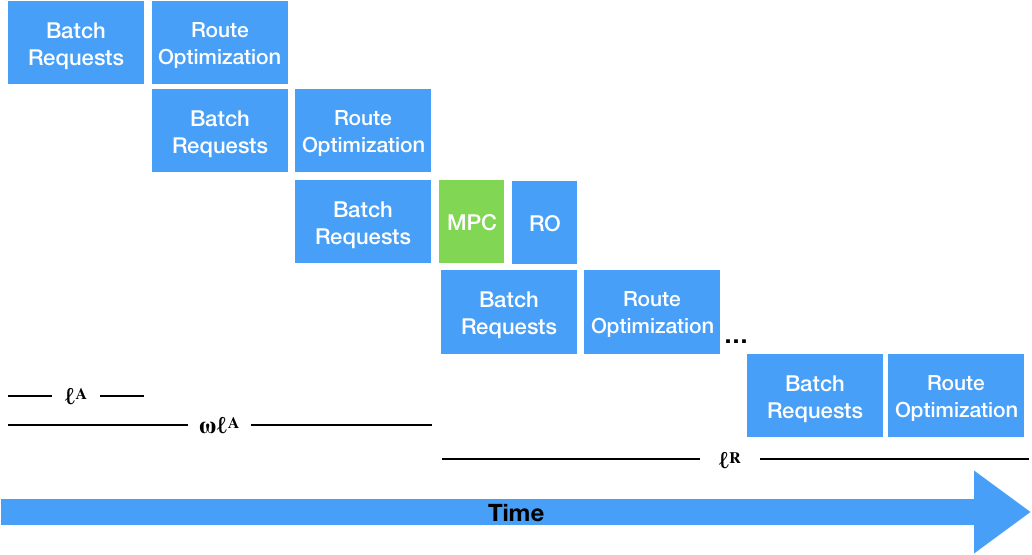Large-scale ride-sharing systems combine real-time dispatching and routing optimization over a rolling time horizon with a model predictive control (MPC) component that relocates idle vehicles to anticipate the demand. The MPC optimization operates over a longer time horizon to compensate for the inherent myopic nature of the real-time dispatching. These longer time horizons are beneficial for the quality of relocation decisions but increase computational complexity. Consequently, the ride-sharing operators are often forced to use a relatively short time horizon. To address this computational challenge, this paper proposes a hybrid approach that combines machine learning and optimization. The machine-learning component learns the optimal solution to the MPC on the aggregated level to overcome the sparsity and high-dimensionality of the solution. The optimization component transforms the machine-learning prediction back to the original granularity through a tractable transportation model. As a consequence, the original NP-hard MPC problem is reduced to a polynomial time prediction and optimization, which allows the ride-sharing operators to consider a longer time horizon. Experimental results show that the hybrid approach achieves significantly better service quality than the MPC optimization in terms of average rider waiting time, due to its ability to model a longer horizon.
翻译:大型搭车共享系统在滚动的时间范围内将实时调度和路由优化结合起来,同时采用模型预测控制(MPC)部分,将闲置车辆迁移到不同地点,以预测需求。MPC优化运行的时间跨度较长,以弥补实时调度固有的短视性。这些较长的时间跨度有利于搬迁决定的质量,但增加了计算的复杂性。因此,搭车共享操作员往往被迫使用相对较短的时间跨度。为了应对这一计算挑战,本文件建议采用混合方法,将机器学习与优化结合起来。机器学习部分在总体水平上学习对MPC的最佳解决方案,以克服解决方案的宽度和高度维度。优化部分通过可移动的运输模式将机器学习预测转换到原始颗粒性。因此,最初的NP-硬的MPC问题被减为多元时间预测和优化,使搭车运营商能够考虑更长的时间跨度。实验结果表明,混合方法在总体水平上比MPC优化的平均时间跨度能力大大提高。











